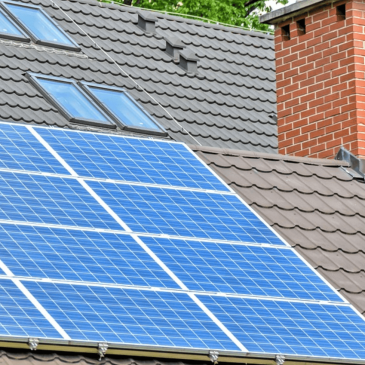How to Know When Solar Returns on Your Investment
Investing in solar energy is an increasingly popular choice for homeowners looking to reduce their energy costs and environmental footprint. However, one of the most important factors to consider before making this investment is the solar payback period. This is the time it takes for the savings generated by your solar system to equal the initial cost of installation.
Understanding this period will help you determine whether solar panels are a financially viable option for your home. Just follow the steps below to learn how to effectively calculate your solar payback period.
Understanding the Basic Financials of Solar Installations
- Initial Costs: The initial cost of a solar panel system includes the price of the panels, inverter, mounting hardware, installation, and any necessary permits. On average, residential solar systems cost between $15,000 and $25,000 before any incentives or rebates are applied.
- Incentives and Rebates: Federal, state, and local incentives can significantly reduce the upfront cost of solar panels. The Federal Investment Tax Credit (ITC) allows homeowners to deduct a significant percentage of their solar installation costs from their federal taxes. Additionally, many states offer rebates, tax credits, or other incentives that can further lower the cost of adding solar to your home.
- Energy Consumption and Savings: To calculate potential savings, you need to understand your household’s energy consumption, which is measured in kilowatt-hours (kWh). Review your past electricity bills to determine your average monthly and annual consumption. Solar panels generate electricity that offsets the amount you need to buy from your utility company, leading to savings on your electric bill.
- Solar System Output: The amount of electricity your solar system generates depends on factors such as panel efficiency, the number of panels, geographic location, and the amount of sunlight your roof receives. Most solar installers can provide you with an estimate of your system’s potential annual energy production in kWh.
Calculating the Payback Period
Here’s a step-by-step method to calculate your solar payback period:
Step 1: Determine Your System’s Net Installation Cost
To determine the net installation cost of your solar system you can simply subtract any applicable incentives, rebates, and tax credits from the initial installation cost quoted to you by your installer.
Net Installation Cost = Initial Cost − Incentives − Rebates − Tax Credits
Step 2: Estimate Your Annual Energy Savings
Next, you can calculate your potential annual savings by multiplying your solar system’s annual energy production (in kWh) by your utility’s electricity rate. For example, if your utility rate is $0.12 per kWh, and your solar system produces 10,000 kWh per year, then your annual savings can be calculated using the following equation:
Annual Savings = Annual Energy Production (kWh) × Electricity Rate
Or, in relation to the example listed:
Annual Savings = 10,000 kWh × $0.12/kWh = $1,200
Step 3: Calculate Your System’s Payback Period
Now that you have your net installation cost and annual savings, you can calculate the length of time it will take for you to reach your payback period. To do this, simply divide your net installation cost by your annual savings.
So, if your net installation cost is $15,000 and your annual savings are $1,200, then the payback period would be:
Payback Period = $15,000 / $1,200 = 12.5 years
Factors That Can Influence Your Payback Period
It is important to note that your payback period is a rough estimate and not guaranteed because there are several external factors that can potentially influence it. Some of these factors include:
- Utility Rates: Higher electricity rates increase your savings and shorten the payback period. Conversely, lower rates extend it.
- Solar System Efficiency: Advances in solar technology can lead to more efficient panels that produce more energy and shorten the payback period. But if you choose lower quality solar panels, then your system may not be as efficient and this will lengthen the payback period.
- Maintenance and Repairs: While solar systems require minimal maintenance, occasional repairs or inverter replacements can affect your overall savings.
Is Solar Worth It?
Calculating the solar payback period helps you make a more informed decision about investing in solar energy. If the payback period is shorter than the expected life of the solar system (typically 25-30 years), then going solar will be a sound investment. Moreover, the environmental benefits and potential increase in property value can also add to the attractiveness of going solar.
By understanding solar’s cost and savings potential, and accurately calculating the payback period, you can determine if solar energy is a worthwhile investment for your home.

